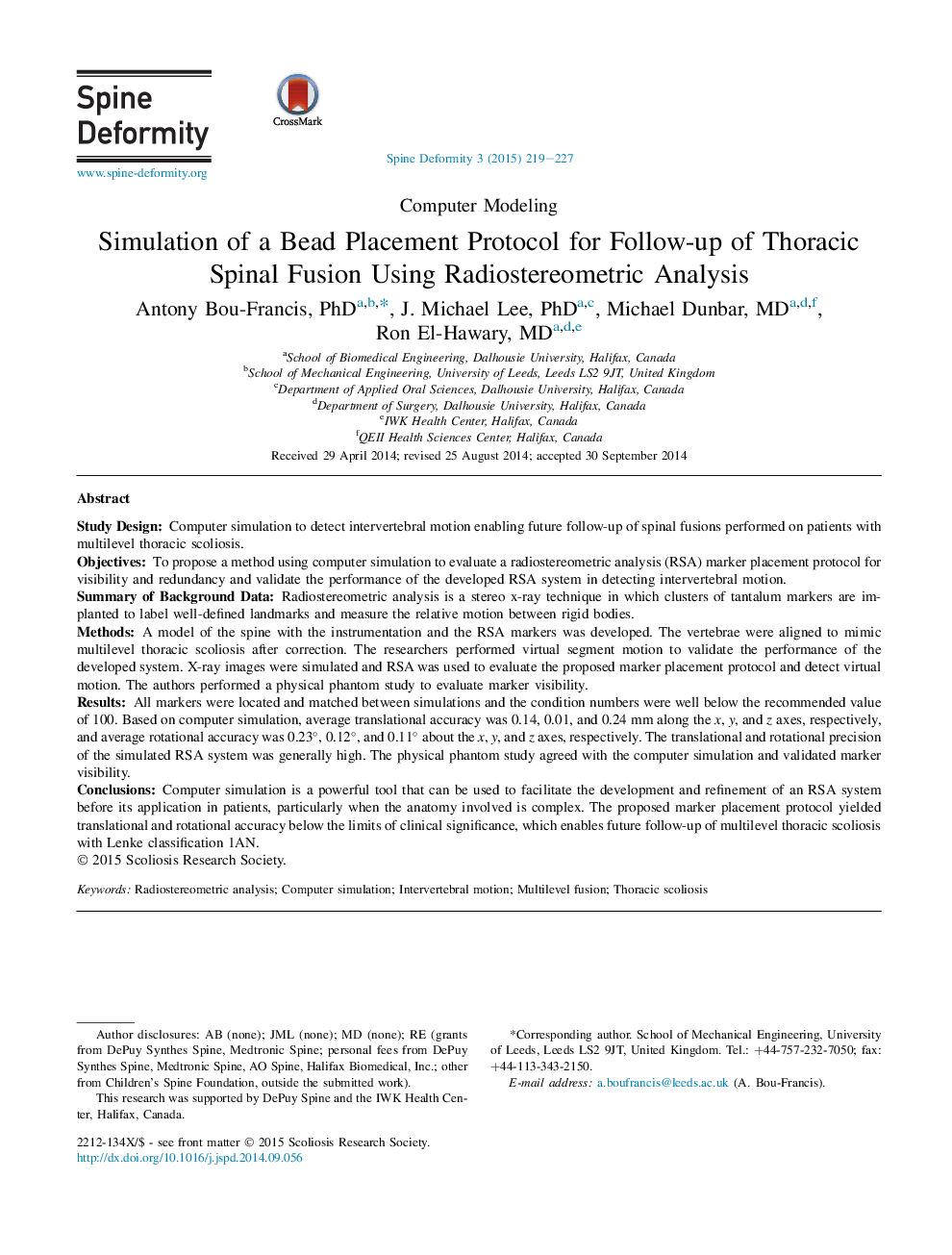| کد مقاله | کد نشریه | سال انتشار | مقاله انگلیسی | نسخه تمام متن |
|---|---|---|---|---|
| 4095345 | 1268529 | 2015 | 9 صفحه PDF | دانلود رایگان |
Study DesignComputer simulation to detect intervertebral motion enabling future follow-up of spinal fusions performed on patients with multilevel thoracic scoliosis.ObjectivesTo propose a method using computer simulation to evaluate a radiostereometric analysis (RSA) marker placement protocol for visibility and redundancy and validate the performance of the developed RSA system in detecting intervertebral motion.Summary of Background DataRadiostereometric analysis is a stereo x-ray technique in which clusters of tantalum markers are implanted to label well-defined landmarks and measure the relative motion between rigid bodies.MethodsA model of the spine with the instrumentation and the RSA markers was developed. The vertebrae were aligned to mimic multilevel thoracic scoliosis after correction. The researchers performed virtual segment motion to validate the performance of the developed system. X-ray images were simulated and RSA was used to evaluate the proposed marker placement protocol and detect virtual motion. The authors performed a physical phantom study to evaluate marker visibility.ResultsAll markers were located and matched between simulations and the condition numbers were well below the recommended value of 100. Based on computer simulation, average translational accuracy was 0.14, 0.01, and 0.24 mm along the x, y, and z axes, respectively, and average rotational accuracy was 0.23°, 0.12°, and 0.11° about the x, y, and z axes, respectively. The translational and rotational precision of the simulated RSA system was generally high. The physical phantom study agreed with the computer simulation and validated marker visibility.ConclusionsComputer simulation is a powerful tool that can be used to facilitate the development and refinement of an RSA system before its application in patients, particularly when the anatomy involved is complex. The proposed marker placement protocol yielded translational and rotational accuracy below the limits of clinical significance, which enables future follow-up of multilevel thoracic scoliosis with Lenke classification 1AN.
Journal: Spine Deformity - Volume 3, Issue 3, May 2015, Pages 219–227
